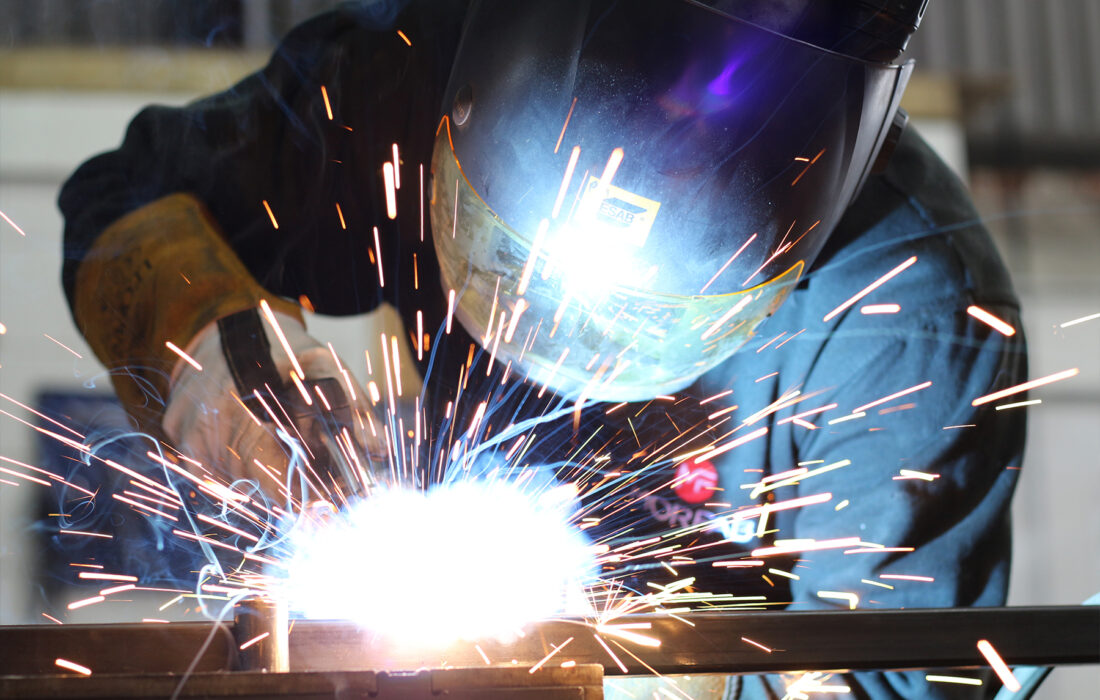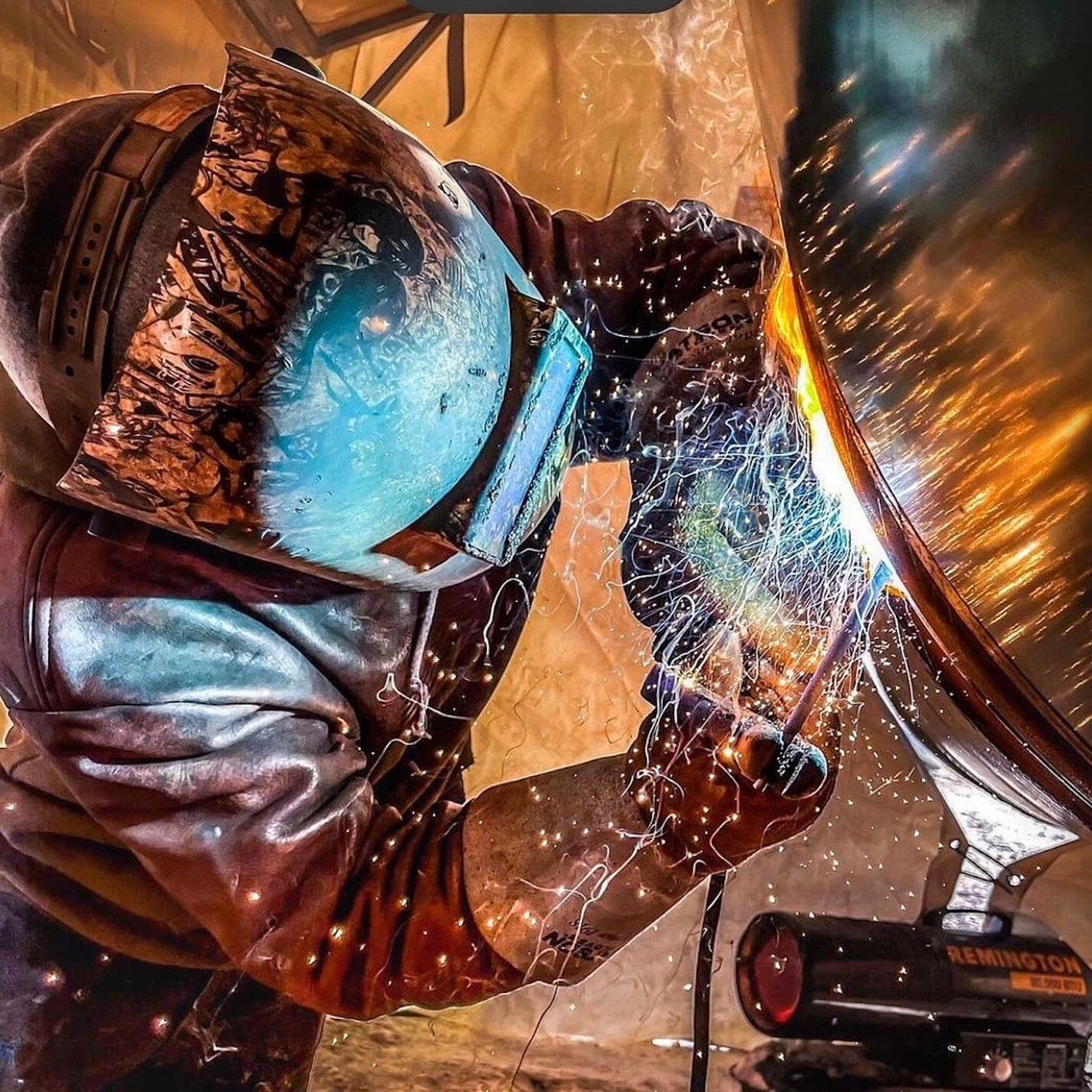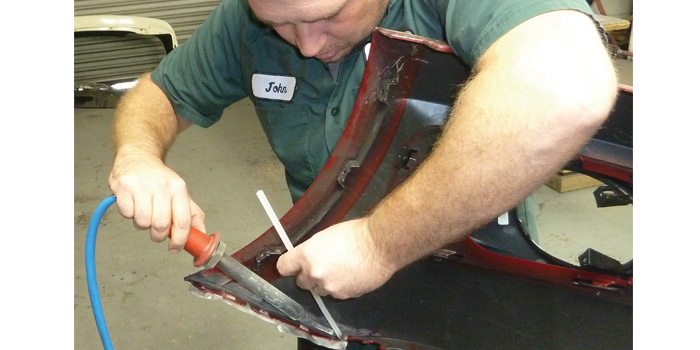Usual Welding Repair Work Issues and Exactly How to Address Them Properly
Welding fixings typically encounter a range of problems that can jeopardize the integrity of the final product. Typical troubles consist of insufficient penetration, porosity, and misalignment, to name a few. Each issue presents distinct challenges that need details techniques for resolution. Recognizing these concerns is vital for welders intending to improve their abilities and outcomes. This discussion will certainly discover these typical welding repair service concerns and reliable techniques to address them.
Inadequate Infiltration
Insufficient infiltration happens when the weld steel stops working to fully fuse with the base material, causing weak joints and potential architectural failings. This problem usually originates from inadequate warm input, inaccurate electrode angle, or inappropriate welding speed. Welders might run into poor penetration because of a mistake of the required specifications for a certain product thickness or kind. In addition, contamination on the base product's surface area can hinder efficient bonding, worsening the trouble. To resolve insufficient infiltration, welders must ensure appropriate settings on their devices and maintain a clean job surface area. Normal evaluation of welds is recommended to identify any kind of deficiencies early, enabling prompt corrections and the avoidance of endangered architectural integrity in welded settings up.
Porosity
Porosity is an usual defect in bonded joints that materializes as small gas bubbles caught within the weld steel. This issue can compromise the stability of the weld, causing reduced stamina and possible failing under tension. Fabrication. Porosity commonly arises from contamination, dampness, or incorrect welding techniques, which allow gases to run away right into the liquified weld swimming pool. To resolve porosity, welders must assure proper surface preparation, preserve a clean workplace, and make use of suitable welding parameters. Furthermore, choosing the ideal filler material and securing gas can minimize gas entrapment. Routine assessment and screening of welds can assist identify porosity early, guaranteeing timely restorative activities are taken, thereby preserving the quality and reliability of the welded structure
Imbalance
Imbalance in welding can occur from different aspects, consisting of inappropriate arrangement and thermal development. Comprehending the root triggers is necessary for efficient resolution. Several improvement strategies are offered to realign components and ensure structural stability.
Root causes of Misalignment
Welding imbalance commonly comes from a range of underlying concerns that can jeopardize structural integrity. One primary cause is inappropriate fit-up of components prior to welding, which can bring about voids and unequal surface areas. Variants in thermal development throughout the welding procedure can likewise result in distortion, particularly if the products being joined have different coefficients of growth. Furthermore, inadequate fixturing and securing may stop working to hold components firmly in position, leading to activity throughout welding. Inadequately maintained devices, consisting of welding makers and devices, might present disparities in the weld bead, further adding to misalignment. Operator mistake, stemming from not enough training or experience, can also play a considerable duty in developing misaligned welds.

Adjustment Techniques Offered
Addressing misalignment properly needs a mix of corrective strategies tailored to the details concerns at hand. One common technique is the usage of jigs or fixtures to hold parts in the appropriate position during welding, ensuring consistent placement. Furthermore, pre-heating the materials can assist decrease distortion and boost fit-up. For considerable misalignment, mechanical realignment techniques, such as using hydraulic jacks or clamps, can be employed to deal with the position prior to welding. Post-weld warmth therapy might also be required to soothe stress and anxieties caused by misalignment. Cautious inspection and change throughout the configuration phase can avoid imbalance concerns from ending up being considerable problems, advertising a smoother welding procedure and boosting general architectural honesty.
Distortion
Distortion is an usual difficulty in welding that can develop from different factors, including irregular home heating and air conditioning. Recognizing the sources of distortion is crucial for executing effective prevention methods. Resolving this concern not only enhances architectural integrity however also improves the total quality of the weld.
Sources of Distortion
When based on the extreme warm of welding, products usually undergo adjustments that can cause distortion. This phenomenon mostly develops from thermal expansion and tightening during the welding process. As the weld location warms up, the product broadens; upon cooling, it contracts, which can create inner stresses. Furthermore, unequal heating across a workpiece can exacerbate these anxieties, causing warping or flexing. The kind of product additionally plays a substantial duty; metals with differing thermal conductivity and coefficients of growth may respond in different ways, causing unpredictable distortions. Bad joint layout and insufficient fixturing can add to imbalance throughout welding, raising the chance of distortion. Comprehending these reasons is necessary for effective welding repair work and prevention strategies.
Avoidance Techniques
Effective prevention techniques for distortion during welding focus on regulating warmth input and ensuring correct joint style. Maintaining a constant warmth input aids to decrease thermal growth and tightening, which can cause distortion. Utilizing strategies such as preheating the workpiece can additionally lower the temperature level gradient, promoting uniform heating. In addition, picking suitable joint styles, such as T-joints or lap joints, can boost security and reduce stress concentrations. Applying correct fixturing to protect the work surfaces in position additionally help in preserving placement during the welding procedure. Finally, staggered welding series can disperse warmth more evenly, protecting against localized distortion. By using these approaches, welders can greatly lower the likelihood of distortion and improve the general top quality of their welds.
Splitting
Fracturing is a typical concern run into in welding repairs, commonly arising from various variables such as incorrect cooling prices, product option, or insufficient joint preparation. The event of splits can greatly endanger the honesty of the weld, causing possible failings throughout operation. To resolve this click now problem, welders must initially examine the origin, making certain that products are suitable and properly picked for the particular application. Additionally, regulating the air conditioning rate during the welding process is crucial; rapid cooling can cause anxiety and cause splitting. Appropriate joint design and preparation likewise add to minimizing the danger. Carrying out these strategies can boost weld high quality and sturdiness, eventually reducing the possibility of cracking in finished weldments.

Insufficient Fusion
A considerable concern in welding fixings is incomplete combination, which occurs when the weld steel does not effectively bond with the base product or previous weld passes - Montana Mobile Welding and Repair Belgrade Fabrication. This issue can cause weaknesses in the joint, possibly compromising the stability of the welded framework. Elements adding to incomplete fusion consist of insufficient heat input, incorrect welding method, and contamination of the surfaces being signed up with. To resolve this concern efficiently, welders ought to assure appropriate pre-weld cleaning and surface area preparation, in addition to adjust their welding specifications to attain sufficient penetration and combination. Regular inspection during the welding process can also assist recognize incomplete combination early, permitting timely corrective actions to improve the overall high quality of the weld
Overheating
While welding repair work can enhance architectural integrity, overheating offers a considerable obstacle that can lead to material deterioration. Excessive heat during welding can alter the mechanical homes of steels, leading to reduced strength, boosted brittleness, and bending. This sensation navigate to this website is particularly essential in high-stress applications where structural integrity is critical. Recognizing getting too hot can involve visual evaluations for discoloration or distortion, along with monitoring temperature during the welding procedure. To mitigate the threats connected with getting too hot, welders must utilize ideal strategies, such as regulating warm input, readjusting travel speed, and making use of suitable filler materials. Additionally, executing pre- and post-weld heat treatments can aid bring back material buildings and boost the general More Help top quality of the repair service, ensuring long-lasting performance and safety and security.
Regularly Asked Questions
What Are the Common Signs of a Welding Flaw?

Just How Can I Evaluate My Welds for High quality?
To test welds for quality, one can make use of aesthetic examinations, ultrasonic testing, and radiographic methods. Each strategy guarantees architectural honesty, recognizes flaws, and confirms adherence to defined standards, ultimately enhancing the reliability of the welded joints.
What Safety Precautions Should I Take While Welding?
When welding, one must focus on security by wearing suitable individual protective tools, making certain proper air flow, safeguarding flammable products away, keeping a clean workspace, and knowing surroundings to avoid injuries and crashes.
Can I Repair a Weld Without Redesigning the Entire Joint?
Repairing a weld without remodeling the whole joint is possible, depending on the damage (Montana Mobile Welding and Repair Fabrication). Strategies such as grinding, adding filler product, or utilizing a welding procedure can successfully address specific problems while protecting the bordering framework
What Equipment Are Essential for Efficient Welding Fixes?
Vital tools for effective welding repairs include a welding device, cord brush, grinder, safety equipment, clamps, and filler products. Each tool plays an essential function in making certain high quality and security throughout the repair work procedure. Porosity generally emerges from contamination, wetness, or improper welding strategies, which allow gases to escape into the liquified weld pool. Inadequately maintained equipment, including welding makers and devices, may introduce inconsistencies in the weld bead, additional adding to imbalance. When subjected to the extreme warm of welding, products often undergo adjustments that can lead to distortion. Breaking is a typical concern run into in welding repairs, commonly resulting from numerous variables such as inappropriate cooling rates, material option, or inadequate joint prep work. A considerable problem in welding repair work is insufficient fusion, which occurs when the weld metal does not appropriately bond with the base product or previous weld passes.